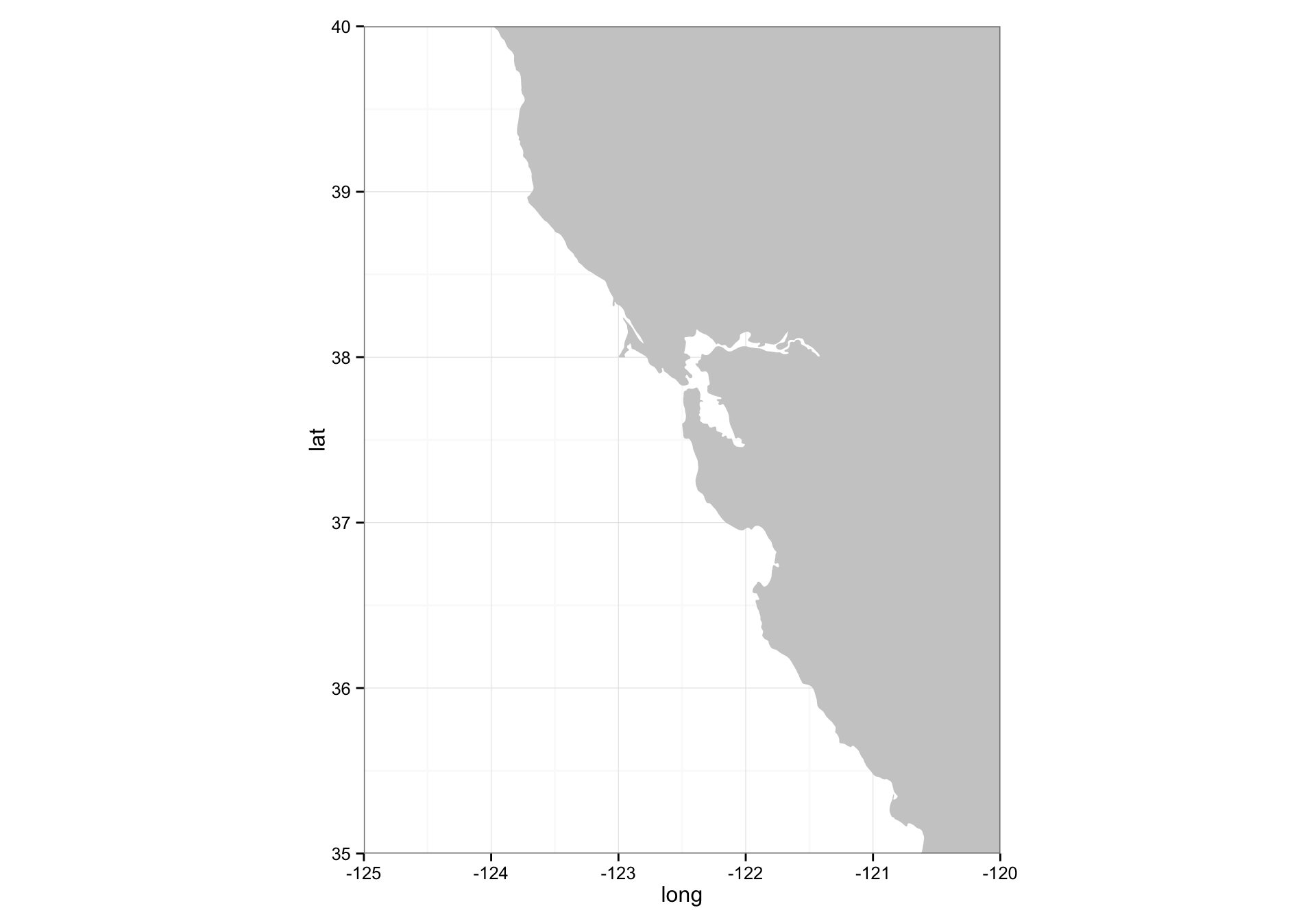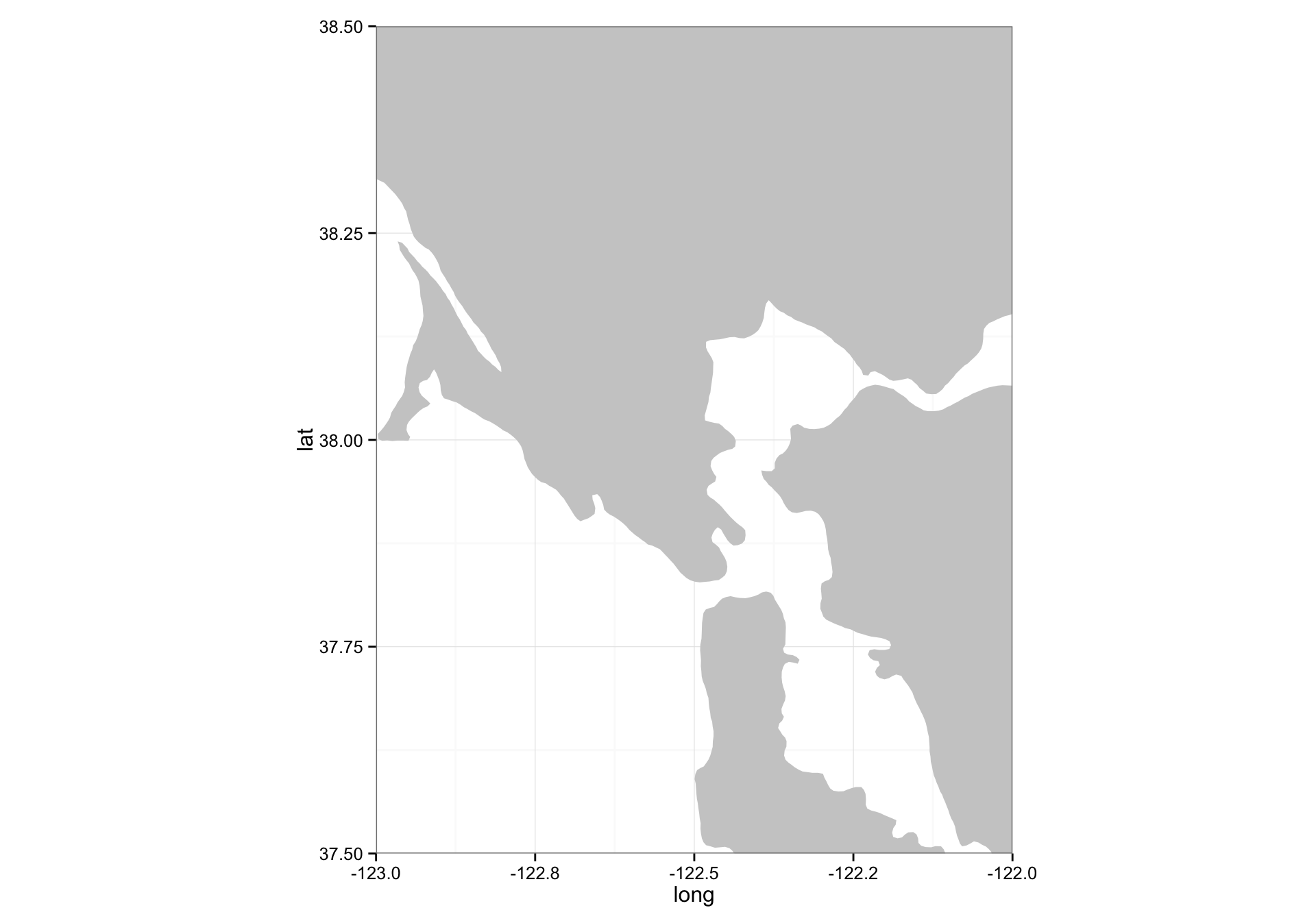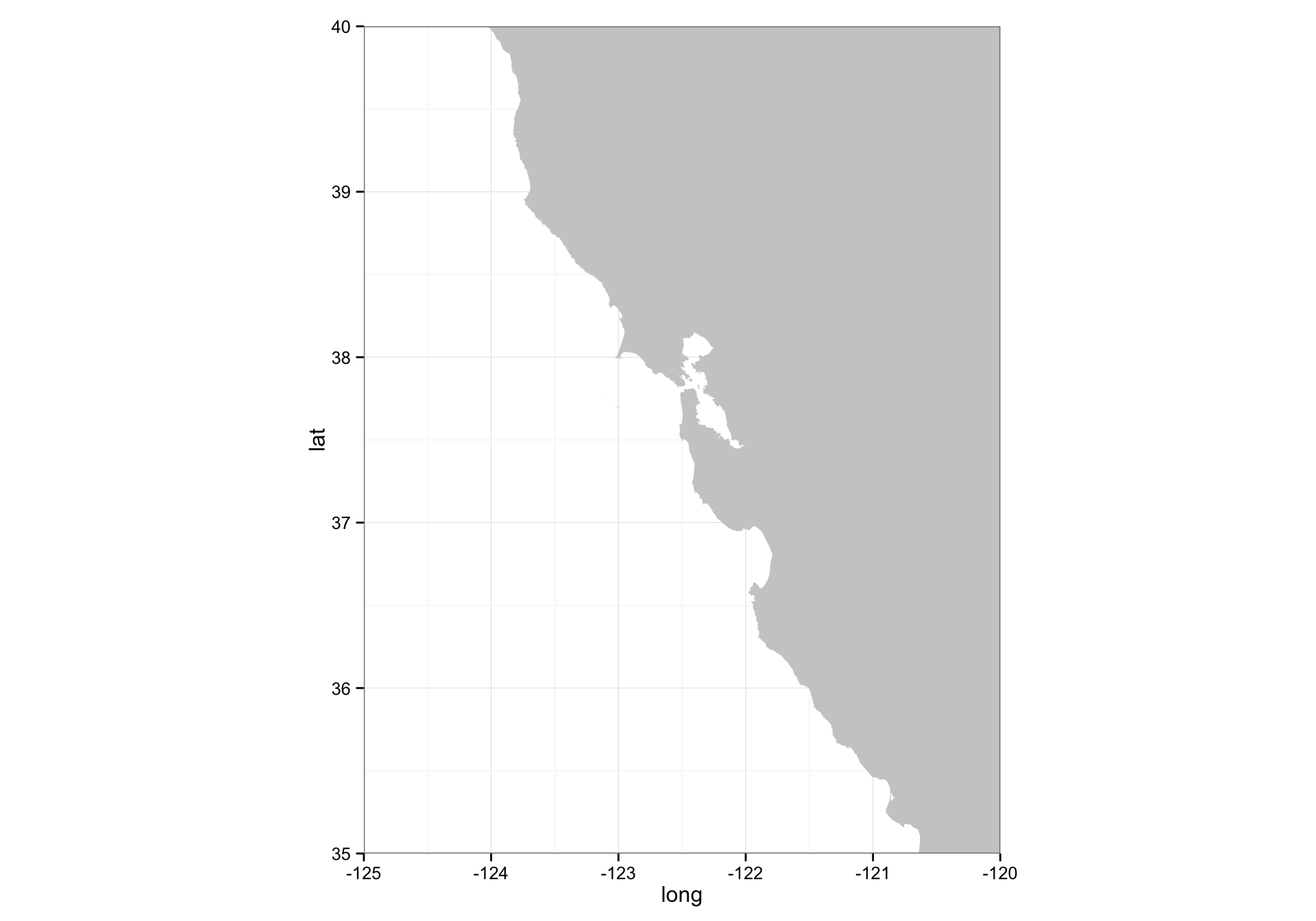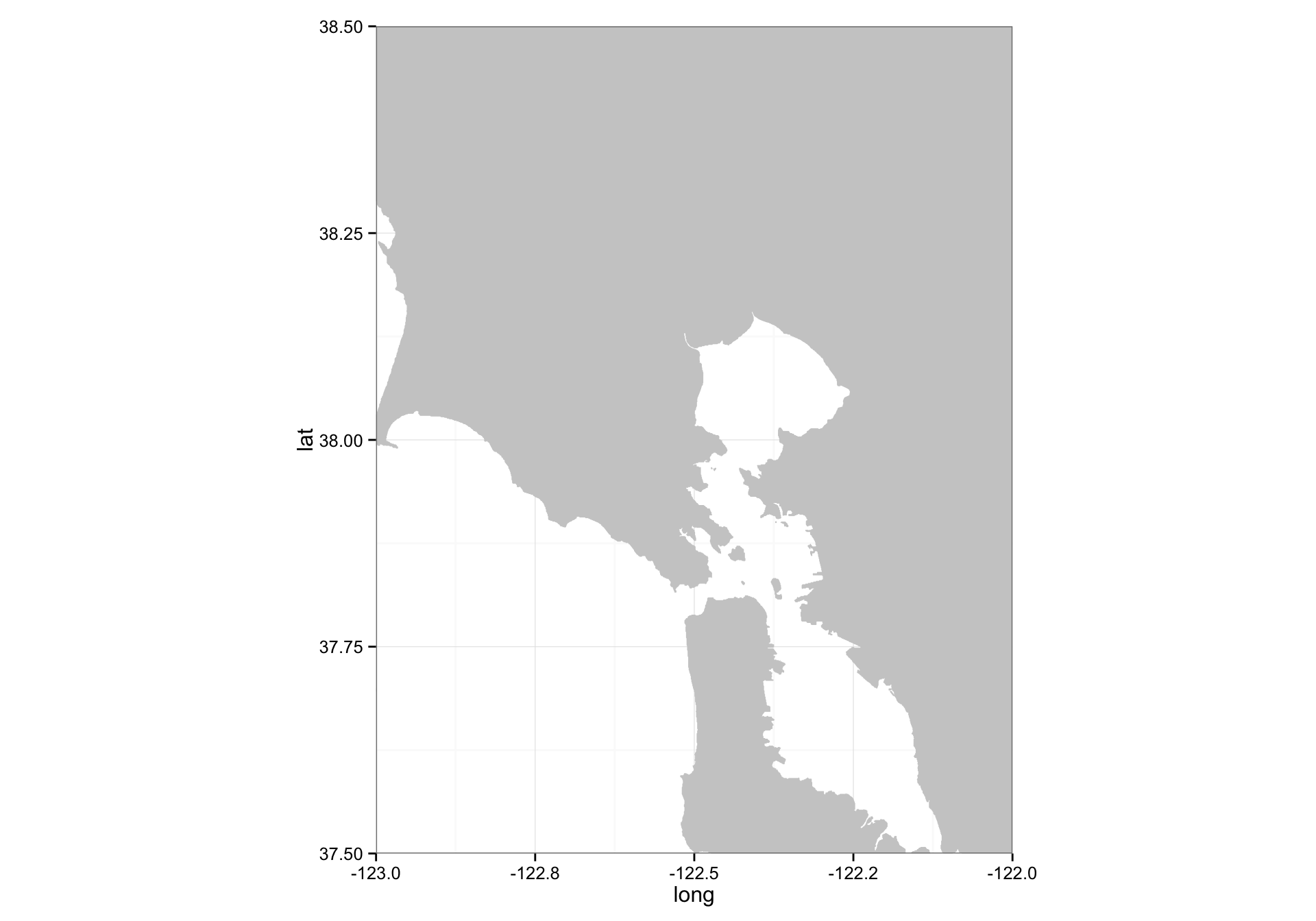Eric C. Anderson's Work-life
Open research with GitHub
Comparing Map Resolutions
17 December 2014
I am curious about how the resolutions of shorelines differ between different map sources.
Roy M just pointed me to the GSHHS shoreline maps (they also
have boundaries and rivers). I am curious how that compares to the worldHires map available in mapdata.
I downloaded the 113 Mb “bin” version that was at http://www.ngdc.noaa.gov/mgg/shorelines/data/gshhg/latest/gshhg-bin-2.3.3.zip. I put the resulting
directory inside a directory called Maps in my home directory.
Load all the libraries we will use:
library(mapdata)
library(maptools)
library(ggplot2)
library(dplyr) # for the %>% operator
Looking at worldHiRes
Let’s have a look at SF bay, first at a California scale:
w <- map_data("worldHires", ylim = c(35,40), xlim = c(-125,-120))
ggplot() + geom_polygon(data = w, aes(x=long, y = lat, group = group), fill = "grey80") +
coord_fixed(1.3, xlim = c(-125,-120), ylim = c(35,40)) +
theme_bw()

And then at a Bay scale:
ggplot() + geom_polygon(data = w, aes(x=long, y = lat, group = group), fill = "grey80") +
coord_fixed(1.3, xlim = c(-123,-122), ylim = c(37.5,38.5)) +
theme_bw()

And compare to GSHHS
First at the California scale.
if (!rgeosStatus()) gpclibPermit()
gshhs.f.b <- "/Users/eriq/Maps/gshhg-bin-2.3.3/gshhs_f.b"
sf1 <- getRgshhsMap(gshhs.f.b, xlim = c(-125, -120), ylim = c(35, 40)) %>%
fortify()
## Data are polygon data
## Data are polygon data
## Rgshhs: clipping 1 of 20 polygons ...
ggplot() + geom_polygon(data = sf1, aes(x=long, y = lat, group = group), fill = "grey80") +
coord_fixed(1.3, xlim = c(-125,-120), ylim = c(35,40)) +
theme_bw()

Then at the Bay scale:
ggplot() + geom_polygon(data = sf1, aes(x=long, y = lat, group = group), fill = "grey80") +
coord_fixed(1.3, xlim = c(-123,-122), ylim = c(37.5,38.5)) +
theme_bw()

OK. So the GSHHS at full resolution is clearly higher quality.
Another important thing to note
What is even more intriguing about this is that it appears that ``ggplot2's get_map function is not very good
at grabbing just the part of the worldHires map that is requested. When you ask for the SF bay region it returns
pretty much all of the USA, perhaps because that is all one polygon. On the other hand, when using getRgshhsMap it
it appears that the function grabs just the area of interest and then appropriately closes the polygons. As a
consequence, the GSHHS maps seems to plot a little faster using ggplot than the mapdata` map, and it takes
up much less space in memory:
format(object.size(sf1), units = "Mb")
## [1] "0.3 Mb"
format(object.size(w), units = "Mb")
## [1] "2.5 Mb"
Let us add some rivers
I am curious to know at what scale the rivers are mapped to.
wdb_rivers_f.b <- "/Users/eriq/Maps/gshhg-bin-2.3.3/wdb_rivers_f.b"
rivers <- getRgshhsMap(wdb_rivers_f.b, xlim = c(-125, -120), ylim = c(35, 40))
## Data are line data
## Data are line data
oops! that is going to be harder to deal with…